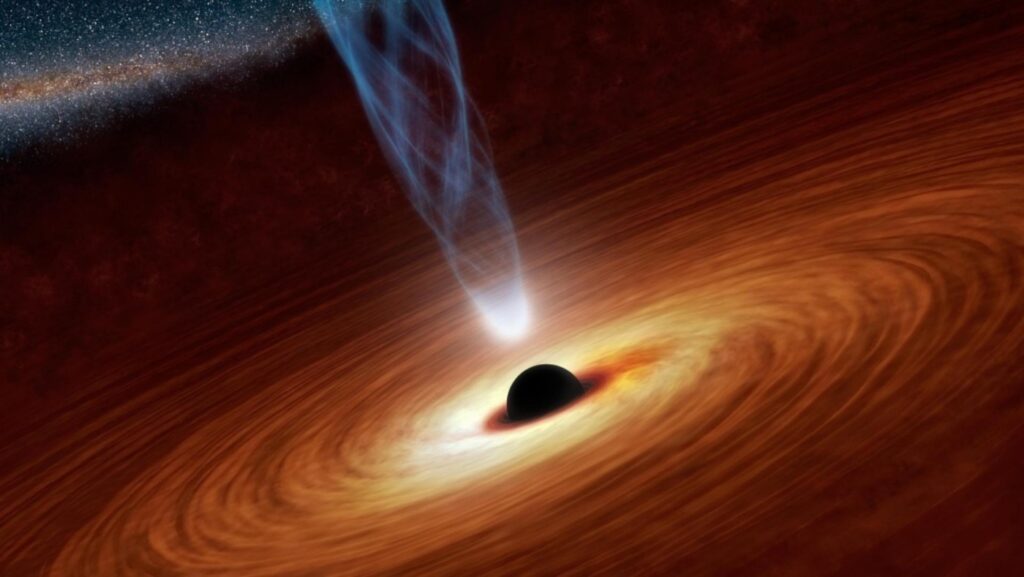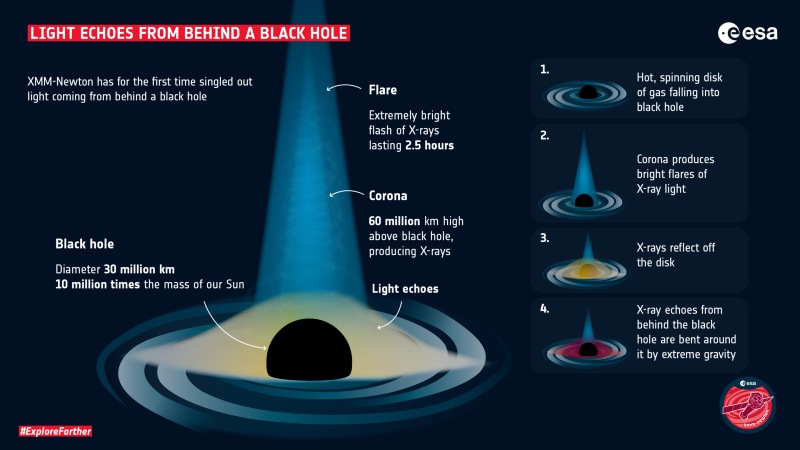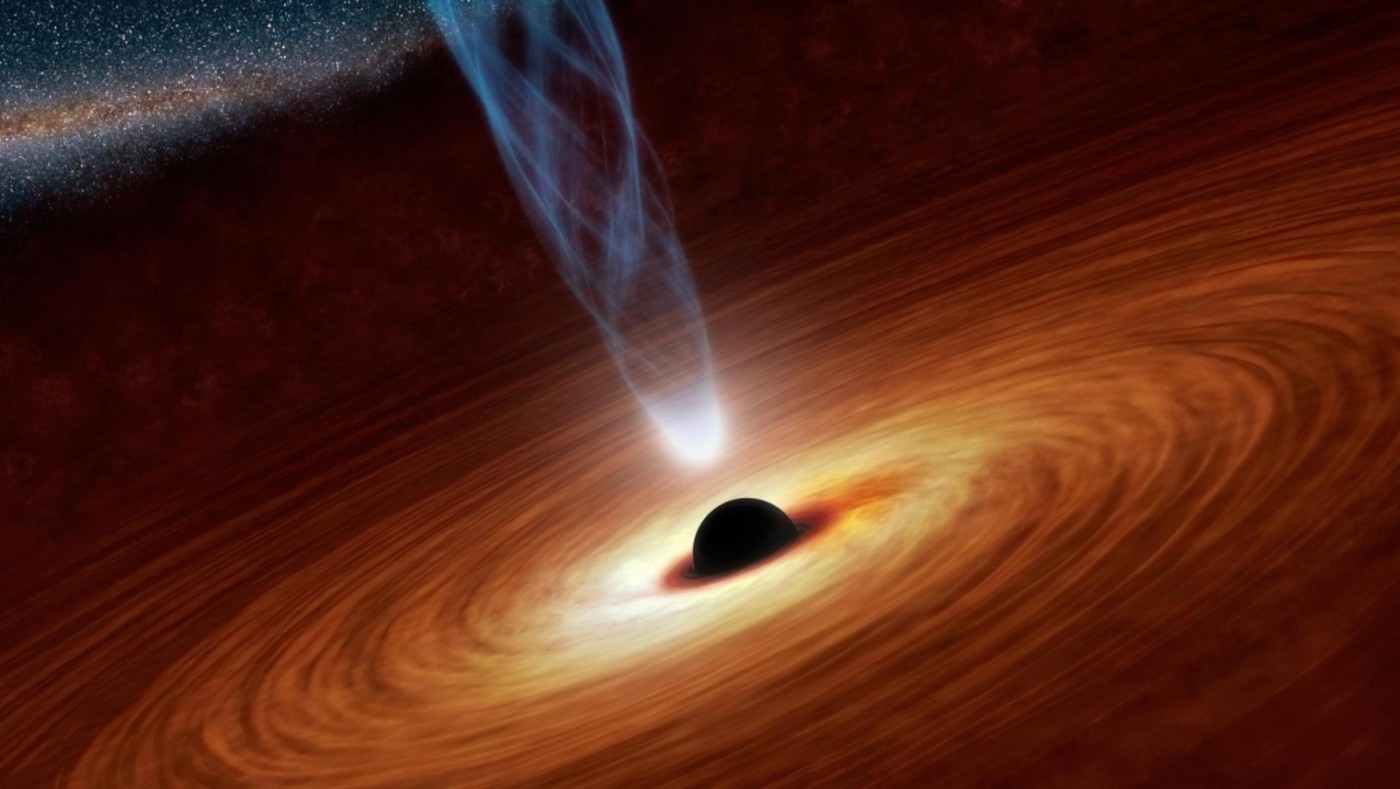
When doing astronomy, you can’t blink, because the difference between a never-before-seen phenomenon, and just a regular day at the telescope can be as small as seeing faint X-rays turn into fainter X-rays for a short moment.
That’s what happened when astrophysicist Dan Wilkins noticed, upon fixing his telescopes on the supermassive blackhole at the center of the galaxy I Zwicky, that following a normal series of powerful X-rays being flung out from the center, came unexpected additional flashes of X-rays that were smaller, later, and of different “colors.”
What he was observing meant astronomers got to say something they love to say: It proved Einstein right… again.
The fainter, different colored lights came from behind the black hole when the powerful burst of X-rays reflected off gasses orbiting it, and which are drawn around by the magnetic and gravitational forces that blend space and time, allowing us to see them faintly.
“Any light that goes into that black hole doesn’t come out, so we shouldn’t be able to see anything that’s behind the black hole,” said Wilkins, a research scientist at the Kavli Institute for Particle Astrophysics and Cosmology at Stanford, in a statement. “The reason we can see that is because that black hole is warping space, bending light, and twisting magnetic fields around itself.”
CHECK OUT: Global Telescope Creates Exquisite Map of Black Hole’s Swirling Magnetic Field
The discovery was made by the European Space Agency’s XMM-Newton and NASA’s NuSTAR space telescopes, which captured the phenomenon in stages displayed for easy comprehension on the ESA website.
Einstein: dead and loving it

At 10 million times the mass of our sun, the supermassive black hole at the center of I Zwicky, 1,800 light-years from our solar system, is surrounded by a swirling cloud of gas and dust that is continuously being pulled into the black hole, like water going down a drain, called a corona.
MORE: NASA Measures Interior of Mars for the First time, Revealing Huge Liquid Core
The corona becomes heated to millions of degrees Kelvin as it spins around, creating disjointed magnetic fields that become “twisted into knots,” which eventually snap, according to ESA.
This snapping creates a massive explosion of heat and energy, which generates bursts of X-rays called “flares” which can last for two and a half hours sometimes.
During this particular discharge of X-rays, Wilkins observed the light reflecting off the gas on the opposite side of the black hole from where the telescopes were viewing it, which due to the bending of space and time around it, changed the properties and colors of the X-rays.
The revelation that we can see light in different colors from the opposite ends of the black hole led Wilkins and his team to believe they could use them to create a color-coded 3D map of a black hole and its surroundings.
RELATED: This Year’s Perseid Meteor Shower Will Be Super-Bright With Up To 50 Shooting Stars An Hour
CBS reminds us that Einstein predicted black holes’ ability to bend light back in 1916, which along with the 2019 “Gates of Hell” image, the gravitational waves discovery using LIGO in 2014, and the discovery that new-born black holes “ring,” means that Einstein, more than 50 years after his death, is still making correct predictions at a faster rate than most living astrophysicists.
SHARE This Far-Out News With Pals on Social Media…




















